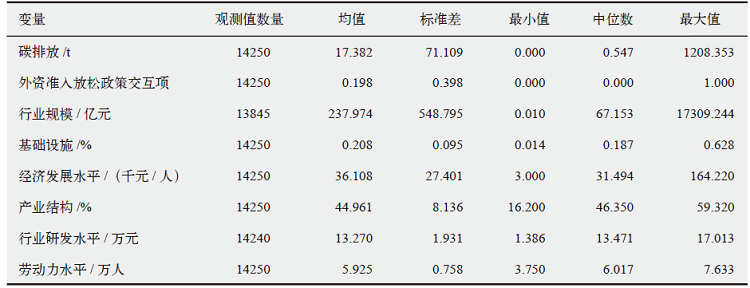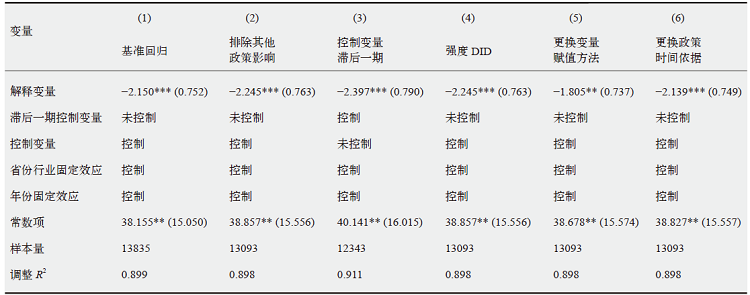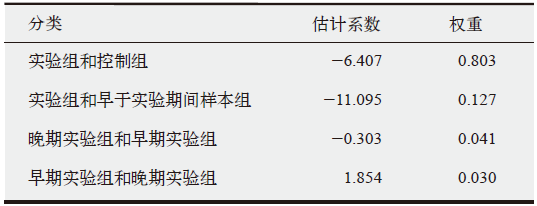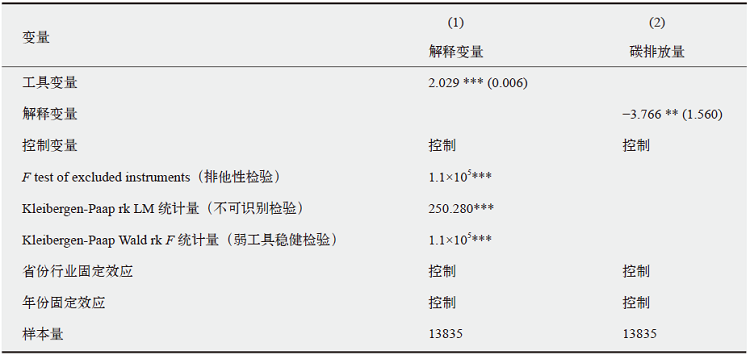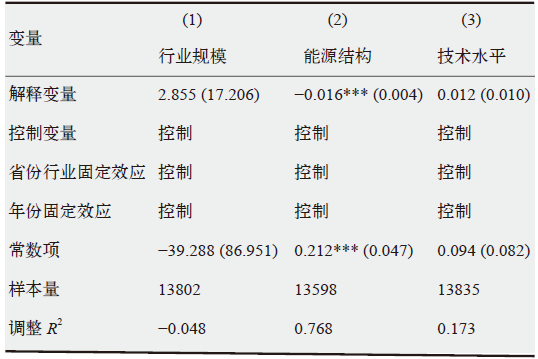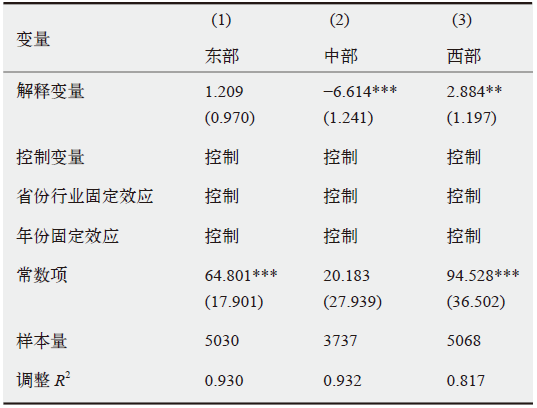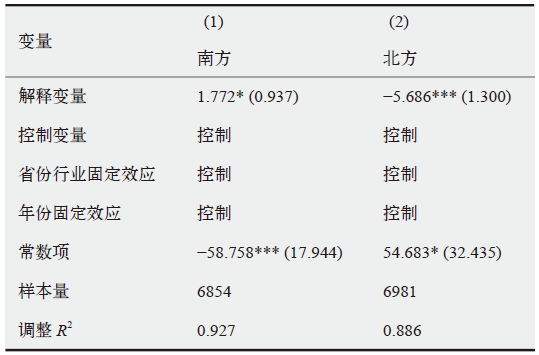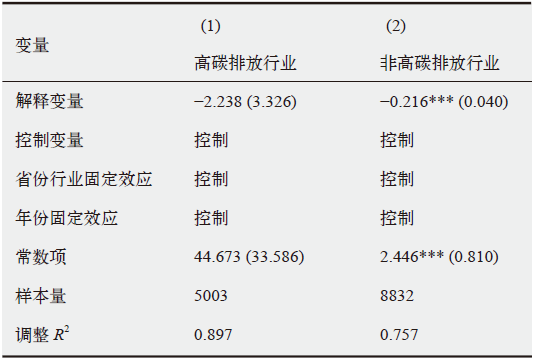Climate Change Research ›› 2024, Vol. 20 ›› Issue (2): 205-219.doi: 10.12006/j.issn.1673-1719.2023.183
• Greenhouse Gas Emissions • Previous Articles Next Articles
Carbon emission effect of foreign investment and its influence on carbon peaking
CAO Xiang( ), JIANG Lu, YU Yang(
), JIANG Lu, YU Yang( )
)
- International Business School, Hainan University, Haikou 570228, China
-
Received:2023-08-24Revised:2023-10-23Online:2024-03-30Published:2024-03-01
Cite this article
CAO Xiang, JIANG Lu, YU Yang. Carbon emission effect of foreign investment and its influence on carbon peaking[J]. Climate Change Research, 2024, 20(2): 205-219.
share this article
Add to citation manager EndNote|Ris|BibTeX
URL: http://www.climatechange.cn/EN/10.12006/j.issn.1673-1719.2023.183
| [1] | 于贵瑞, 郝天象, 朱剑兴. 中国碳达峰、碳中和行动方略之探讨[J]. 中国科学院院刊, 2022, 37 (4): 423-434. |
| Yu G R, Hao T X, Zhu J X. Discussion on action strategies of China’s carbon peak and carbon neutrality[J]. Bulletin of Chinese Academy of Sciences, 2022, 37 (4): 423-434 (in Chinese) | |
| [2] | 周杰琦, 韩颖, 张莹. 外资进入对中国碳排放总量的作用机制与影响效应[J]. 北京理工大学学报 (社会科学版), 2015, 17 (6): 46-53. |
| Zhou J Q, Han Y, Zhang Y. The influence mechanism and effect of foreign investment on China’s carbon emissions[J]. Journal of Beijing Institute of Technology (Social Sciences Edition), 2015, 17 (6): 46-53 (in Chinese) | |
| [3] | 李新安, 李慧. 外资引入、技术进步偏向影响了制造业的碳排放吗?来自我国27个制造行业面板数据模型的实证检验[J]. 中国软科学, 2022 (1): 159-170. |
| Li X A, Li H. Do foreign investment and technological progress bias affect the carbon emission of China’s manufacturing industry? Based on the empirical research of manufacturing sector segmentation data[J]. China Soft Science, 2022 (1): 159-170 (in Chinese) | |
| [4] | 宋德勇, 易艳春. 外商直接投资与中国碳排放[J]. 中国人口·资源与环境, 2011, 21 (1): 49-52. |
| Song D Y, Yi Y C. FDI and China’s carbon emissions[J]. China Population, Resources and Environment, 2011, 21 (1): 49-52 (in Chinese) | |
| [5] | 王晓林, 张华明. 外商直接投资碳排放效应研究: 基于城镇化门限面板模型[J]. 预测, 2020, 39 (1): 59-65. |
| Wang X L, Zhang H M. Research on carbon emission effect of FDI in China: based on threshold panel model of urbanization[J]. Frontiers of Science and Technology of Engineering Management, 2020, 39 (1): 59-65 (in Chinese) | |
| [6] |
Yang D. Research on the impact of FDI in producer services on carbon emissions[J]. E3S Web of Conferences, 2020, 206 (3): 01002
doi: 10.1051/e3sconf/202020601002 URL |
| [7] | 岳武, 杜莉. 中国FDI与ODI对低碳经济发展的影响以及对“一带一路”战略的启示[J]. 武汉大学学报 (哲学社会科学版), 2017, 70 (2): 52-60. |
| Yue W, Du L. The effects of FDI and ODI on the development of low carbon economy and the inspiration for B&R strategy[J]. Wuhan University Journal (Philosophy & Social Science), 2017, 70 (2): 52-60 (in Chinese) | |
| [8] | 郑佳佳, 喻晓蕾. FDI的引进加剧了我国的碳排放吗?基于市场化角度的再分析[J]. 中国管理科学, 2015, 23 (S1): 778-785. |
| Zheng J J, Yu X L. Did the introduction of FDI contribute to China’s carbon emissions? Analysis based on the market perspective[J]. Chinese Journal of Management Science, 2015, 23 (S1): 778-785 (in Chinese) | |
| [9] | Zeng X H, Zheng J S. Discussion the strategy on introducing FDI to China under low-carbon economy: empirical research on the relationship between carbon emission and FDI in China[J]. 2014 4th International Conference on Applied Social Science (ICASS 2014), 2014, 51: 297-302 |
| [10] | Zhou J G, Guang F T. The impact of FDI on carbon dioxide emissions in China[J]. 3rd International Conference on Education Reform and Modern Management (2016), 2016: 136-140 |
| [11] | 江心英, 赵爽. 双重环境规制视角下FDI是否抑制了碳排放: 基于动态系统GMM估计和门槛模型的实证研究[J]. 国际贸易问题, 2019 (3): 115-130. |
| Jiang X Y, Zhao S. Does FDI inhibit carbon emissions from the perspective of dual environmental regulation: an empirical study based on dynamic system GMM estimation and threshold model[J]. Journal of International Trade, 2019 (3): 115-130 (in Chinese) | |
| [12] | 白红菊, 刘蒂, 齐绍洲. FDI不同来源地对我国碳排放影响的实证分析[J]. 世界经济研究, 2015 (7): 108-115, 129. |
| Bai H J, Liu D, Qi S Z. Empirical analysis of the influence of different sources of FDI on China’s carbon emissions[J]. World Economy Studies, 2015 (7): 108-115, 129 (in Chinese) | |
| [13] | Grossman G, Krueger A B. Environmental impacts of a North American free trade agreement[J]. C.E.P.R. Discussion Papers, 1991 |
| [14] | 冷艳丽, 冼国明, 杜思正. 外商直接投资与雾霾污染: 基于中国省际面板数据的实证分析[J]. 国际贸易问题, 2015 (12): 74-84. |
| Leng Y L, Xian G M, Du S Z. Foreign direct investment and haze pollution: an empirical analysis based on provincial panel data[J]. Journal of International Trade, 2015 (12): 74-84 (in Chinese) | |
| [15] | 逯进, 赵亚楠, 苏妍. “文明城市”评选与环境污染治理: 一项准自然实验[J]. 财经研究, 2020, 46 (4): 109-124. |
| Lu J, Zhao Y N, Su Y. “Civilized City” selection and environmental pollution control: a quasi-natural experiment[J]. Journal of Finance and Economics, 2020, 46 (4): 109-124 (in Chinese) | |
| [16] | 李子豪, 刘辉煌. 中国工业行业碳排放绩效及影响因素: 基于FDI技术溢出效应的分析[J]. 山西财经大学学报, 2012, 34 (9): 65-73. |
| Li Z H, Liu H H. Research on carbon dioxide emission performance and affecting factors in Chinese industrial sectors: based on FDI technology spillovers[J]. Journal of Shanxi University of Finance and Economics, 2012, 34 (9): 65-73 (in Chinese) | |
| [17] | 包群, 陈媛媛, 宋立刚. 外商投资与东道国环境污染: 存在倒U型曲线关系吗?[J]. 世界经济, 2010, 33 (1): 3-17. |
| Bao Q, Chen Y Y, Song L G. Foreign investment and host country environmental pollution: is there an inverted U-shaped relationship?[J]. The Journal of World Economy, 2010, 33 (1): 3-17 (in Chinese) | |
| [18] |
Antweiler W, Copeland B R, Taylor M S. Is free trade good for the environment?[J]. The American Economic Review, 2001, 91 (4): 877-908
doi: 10.1257/aer.91.4.877 URL |
| [19] | 韩超, 朱鹏洲. 改革开放以来外资准入政策演进及对制造业产品质量的影响[J]. 管理世界, 2018, 34 (10): 43-62. |
| Han C, Zhu P Z. The evolution of foreign investment access policy since the reform and opening up and its impact on the manufacturing products quality[J]. Journal of Management World, 2018, 34 (10): 43-62 (in Chinese) | |
| [20] |
Shan Y, Guan D, Zheng H, et al. China CO2 emission accounts 1997-2015[J]. Scientific Data, 2018, 5: 170201
doi: 10.1038/sdata.2017.201 URL |
| [21] | 蒋和胜, 孙明茜. 碳排放权交易、产业结构与地区减排[J]. 现代经济探讨, 2021 (11): 65-73. |
| Jiang H S, Sun M Q. Carbon emissions trading, industrial structure and regional emission reduction[J]. Modern Economic Research, 2021 (11): 65-73 (in Chinese) | |
| [22] | 孙鹏博, 葛力铭. 通向低碳之路: 高铁开通对工业碳排放的影响[J]. 世界经济, 2021, 44 (10): 201-224. |
| Sun P B, Ge L M. The way to low carbon emission: impact of high-speed railway on industrial carbon emissions[J]. The Journal of World Economy, 2021, 44 (10): 201-224 (in Chinese) | |
| [23] | 郭沛, 杨军. 中国工业行业FDI对碳排放强度的影响[J]. 经济问题, 2015 (8): 76-80, 85. |
| Guo P, Yang J. The impact of FDI on carbon intensity in China’s industrial sector[J]. On Economic Problems, 2015 (8): 76-80, 85 (in Chinese) | |
| [24] | 张宁, 张维洁. 中国用能权交易可以获得经济红利与节能减排的双赢吗?[J]. 经济研究, 2019, 54 (1): 165-181. |
| Zhang N, Zhang W J. Can energy quota trading achieve win-win development for economic growth and energy savings in China?[J]. Economic Research Journal, 2019, 54 (1): 165-181 (in Chinese) | |
| [25] | 曹翔, 马莉, 余升国. 自由贸易试验区的外资吸引效应: 来自微观企业的证据[J]. 国际商务 (对外经贸易大学学报), 2021 (5): 31-45. |
| Cao X, Ma L, Yu S G. The foreign investment attraction effect of pilot free trade zones: evidence from micro enterprises[J]. International Business, 2021 (5): 31-45 (in Chinese) | |
| [26] | Beck T, Levine R, Levkov A. Big bad banks? The winners and losers from bank deregulation in the United States[J]. The Journal of Finance, 2010, 65 (5): 1637-1667 |
| [27] | 吴茵茵, 齐杰, 鲜琴, 等. 中国碳市场的碳减排效应研究: 基于市场机制与行政干预的协同作用视角[J]. 中国工业经济, 2021 (8): 114-132. |
| Wu Y Y, Qi J, Xian Q, et al. The carbon emission reduction effect of China’s carbon market: from the perspective of the coordination between market mechanism and administrative intervention[J]. China Industrial Economics, 2021 (8): 114-132 (in Chinese) | |
| [28] | 陶锋, 赵锦瑜, 周浩. 环境规制实现了绿色技术创新的“增量提质”吗: 来自环保目标责任制的证据[J]. 中国工业经济, 2021 (2): 136-154. |
| Tao F, Zhao J Y, Zhou H. Does environmental regulation improve the quantity and quality of green innovation: evidence from the target responsibility system of environmental protection[J]. China Industrial Economics, 2021 (2): 136-154 (in Chinese) | |
| [29] | 王贤彬, 谢倩文. 重点产业政策刺激制造业企业投资房地产了吗?来自五年规划与上市公司的证据[J]. 经济科学, 2021 (1): 57-68. |
| Wang X B, Xie Q W. Does the policy on key industries stimulate manufacturing companies to invest in real estate? Evidence from five-year plans and public companies[J]. Economic Science, 2021 (1): 57-68 (in Chinese) | |
| [30] | 蒋灵多, 陆毅. 市场竞争加剧是否助推国有企业加杠杆[J]. 中国工业经济, 2018 (11): 155-173. |
| Jiang L D, Lu Y. Whether market competition increasing boosts the leverage of SOEs[J]. China Industrial Economics, 2018 (11): 155-173 (in Chinese) | |
| [31] |
Baker A C, Larcker D F, Wang C. How much should we trust staggered difference-in-differences estimates?[J]. Journal of Financial Economics, 2022, 144 (2): 370-395
doi: 10.1016/j.jfineco.2022.01.004 URL |
| [32] |
Goodman-Bacon A. Difference-in-differences with variation in treatment timing[J]. Journal of Econometrics, 2021, 225 (2): 254-277
doi: 10.1016/j.jeconom.2021.03.014 URL |
| [33] | 祝继高, 朱佳信, 李天时, 等. 政府会计监督与银行信贷行为研究: 基于财政部会计信息质量随机检查的证据[J]. 管理世界, 2023, 39 (1): 157-176, 177-179, 189. |
| Zhu J G, Zhu J X, Li T S, et al. Government accounting oversight and bank lending behavior: evidence from the random inspection of accounting information quality by the ministry of finance of the people’s republic of China[J]. Journal of Management World, 2023, 39 (1): 157-176, 177-179, 189 (in Chinese) | |
| [34] | 吕越, 张昊天, 薛进军, 等. 税收激励会促进企业污染减排吗: 来自增值税转型改革的经验证据[J]. 中国工业经济, 2023 (2): 112-130. |
| Lv Y, Zhang H T, Xue J J, et al. Do tax incentives promote emission abatement of firms: evidence from China’s value-added tax transformation reform[J]. China Industrial Economics, 2023 (2): 112-130 (in Chinese) | |
| [35] | 刘政, 姚雨秀, 张国胜, 等. 企业数字化、专用知识与组织授权[J]. 中国工业经济, 2020 (9): 156-174. |
| Liu Z, Yao Y X, Zhang G S, et al. Firm’s digitalization, specific knowledge and organizational empowerment[J]. China Industrial Economics, 2020 (9): 156-174 (in Chinese) | |
| [36] | 马大来, 武文丽, 董子铭. 中国工业碳排放绩效及其影响因素: 基于空间面板数据模型的实证研究[J]. 中国经济问题, 2017 (1): 121-135. |
| Ma D L, Wu W L, Dong Z M. Industrial carbon emission performance and its influencing factors in China: based on an empirical study of spatial panel data model[J]. China Economic Studies, 2017 (1): 121-135 (in Chinese) | |
| [37] | 查建平, 唐方方, 郑浩生. 什么因素多大程度上影响到工业碳排放绩效: 来自中国 (2003—2010)省级工业面板数据的证据[J]. 经济理论与经济管理, 2013 (1): 79-95. |
| Zha J P, Tang F F, Zheng H S. Determinant factors of industrial carbon emissions performance: evidence from Chinese provincial industrial panel data[J]. Economic Theory and Business Management, 2013 (1): 79-95 (in Chinese) | |
| [38] | 陈媛媛, 李坤望. 中国工业行业SO2排放强度因素分解及其影响因素: 基于FDI产业前后向联系的分析[J]. 管理世界, 2010 (3): 14-21. |
| Chen Y Y, Li K W. Factorization of SO2 emission intensity in China’s industrial sectors and its influencing factors: an analysis based on the forward and backward correlation of FDI industries[J]. Journal of Management World, 2010 (3): 14-21 (in Chinese) | |
| [39] | 刘渝琳, 温怀德. 经济增长下的FDI、环境污染损失与人力资本[J]. 世界经济研究, 2007 (11): 48-55, 87. |
| Liu Y L, Wen H D. FDI. human resources and environmental pollution loss in Chinese economic growth[J]. World Economy Studies, 2007 (11): 48-55, 87 (in Chinese) | |
| [40] | 刘厚俊, 刘正良. 人力资本门槛与FDI效应吸收: 中国地区数据的实证检验[J]. 经济科学, 2006 (5): 90-98. |
| Liu H J, Liu Z L. Human capital threshold and FDI effect absorption: an empirical test of regional data in China[J]. Economic Science, 2006 (5): 90-98 (in Chinese) | |
| [41] | 杨多贵, 刘开迪, 周志田. 我国南北地区经济发展差距及演变分析[J]. 中国科学院院刊, 2018, 33 (10): 1083-1092. |
| Yang D G, Liu K D, Zhou Z T. Study on regional economic development disparity and its evolution between southern and northern China[J]. Bulletin of Chinese Academy of Sciences, 2018, 33 (10): 1083-1092 (in Chinese) | |
| [42] | 朱启荣. 中国出口贸易中的CO2排放问题研究[J]. 中国工业经济, 2010 (1): 55-64. |
| Zhu Q R. Research on the CO2 emissions produces by China’s exports[J]. China Industrial Economics, 2010 (1): 55-64 (in Chinese) | |
| [43] | 傅京燕, 张春军. 国际贸易、碳泄漏与制造业CO2排放[J]. 中国人口·资源与环境, 2014, 24 (3): 13-18. |
| Fu J Y, Zhang C J. International trade, carbon leakage and CO2 emissions of manufacturing industry[J]. China Population, Resources and Environment, 2014, 24 (3): 13-18 (in Chinese) | |
| [44] | 罗良文, 李珊珊. 对外贸易技术效应与中国工业碳排放: 基于产业关联的视角[J]. 经济管理, 2013, 35 (1): 11-22. |
| Luo L W, Li S S. Technical effects of international trade and industrial carbon emissions in China: from the perspective of industrial linkages[J]. Business and Management Journal, 2013, 35 (1): 11-22 (in Chinese) |
| Viewed | ||||||
|
Full text |
|
|||||
|
Abstract |
|
|||||


